Abstract 5/2012
Janusz Chodur, Krzysztof Ostrowski
Characterisation of traffic flow during the initial phase of the green signal at signalised intersections
The study aimed to model the process of decongesting a departure queue and vehicles’ entry to an intersection during the initial phase of the green signal with a view to identifying specific features of operation of a rural signalised intersection. Detailed analysis was conducted of entry to the intersection of the first vehicle in the queue during individual signal cycles and of headways between vehicles on the stop line which revealed an intensity significantly different from that of the middle interval of the green signal. Weibull and gamma distributions were found to be the best method describing the random variable constituted by the moment of entry of the first vehicle in the queue. The parameters of the distribution depend, amongst others, on the location of the entry lane, share of heavy vehicles, intersection’s location (urban, rural). Urban intersections reveal faster start-off of vehicles after change of signal, but also a larger share of premature entries than at rural intersections. The median share of premature entries to urban intersections stands at 15% of all entries compared to 5% at rural intersections. Vehicles’ early entries to the intersection during the start of the phase may endanger traffic safety.
Lower intensity of vehicles’ entry to the intersection during the early phase of the green signal generates lost time which is relevant for estimation of capacity at entries to intersections. Regression analysis of the impact of road and traffic conditions on the quantity of time lost have revealed a sizeable (even if amounting to 32% – 48% of the dependent variable) impact of the intersections’ location, moment of entry of the first vehicle, share of heavy vehicle traffic and distance of the stop line from the pole-mounted signals. Minimum, instantaneous values of saturation flows in signal cycles at rural intersections have lower values, even at 200 E/h than at urban intersections.
Keywords: signalised intersection, traffic modelling, lost time
Maciej Kruszyna, Jarosław Wierzbicki
The idea of integrated transfer node for Lubin
In two earlier publications ([1], [2]) the Author approaches elements to form of transfer nodes (hubs), particularly rail connections with the bus. The model solutions are described. This paper presents the example of a potential node for the city of Lubin based on the idea [3]. Currently in Lubin there is no passenger rail transport, and bus stops in regional and urban transport are located outside the city center. The presented concept aims to create an integrated transport hub located near the train station. It is assumed to reactivate of rail transport. Integration of transportation should enhance the importance of rail and public transport. In the longer term, the construction of the service center at the transfer node is assumed. Local government functions are planned among center services, which increase the importance of public transport in the region. The presented example can be a solution model, worthy to be followed in other Polish cities. Approximate rules for calculating the number of stops and other details of the transfer node allow to design of similar objects.
Keywords: public transport, integrated transfer node, bus station
Gondek Stanisław, Bąk Radosław
Entry tests on the red signal at non-urban intersections with traffic lights
Traffic safety is one of the most important criterion in designing signalized intersections. One of the factors contributing to reduce traffic safety level is red light violations. This problem enhances with increasing traffic flow speed at intersection entries as a consequence of dilemma zone. The paper presents red light running problem occurring at high speed signalized intersections localized on national roads. To examine the accident characteristics, this study utilized the SEWiK accident database to investigate the dilemma zone effect on accident frequency – rear-end and side collisions. The results of empirical research of red light running propensity conducted at 14 signalized intersections localized in south Poland are presented. On the basis of kinematic modeling vehicles’ movement the dilemma zone boundaries were designated. Driver stop/go decisions as a response to amber light were examined and classified. The results of analysis indicate a high influence of dilemma zone problem on red light violations frequency. However 26% of the violations can be describe as intentional breaking traffic regulations. Intentional entries on intersection during red signal refer to lower vehicle speed. In assessing comparative analysis of road safety risk associated with the red light running should be taken into account exposure to risk, including traffic flow volume, cycle length and location of the detection loops.
Keywords: traffic engineering, rural signalized intersection, traffic safety, dilemma zone, red light running
Adam Radzimski, Michał Beim
Bicycle policy in Kiel
Numerous innovations, which have become a part of the catalogue of good practices, and sometimes they have even set an impulse for legal changes make Kiel unusual on the bicycle map of Germany. Thanks to a successful policy, a city with topography and climate not well suited for cycling managed to significantly increase the number of trips by bicycle. This growth has been accompanied by a general tendency towards a redefinition of bicycle infrastructure. The emphasis has been shifted from creating separated infrastructure to improving the safety of cyclists, using the infrastructure that serves all the other vehicles. The present article discuses the main issues related to the organization of cycling in Kiel, and the actions of local authorities aimed at the promotion of this form of mobility. The first part of the article is about infrastructure dedicated to cyclists, and the second part presents the so-called invisible infrastructure, which is shared by cyclists and other users. Special attention has been paid to the solutions typical for this particular city. Other parts of the article are devoted to issues concerning bicycle parking and rental, the relationship between cyclists and pedestrians, institutional aspects and social participation, and bicycle tourism. In the conclusion the emphasis is put on the role that the case of Kiel may play in the discussion about the future of bicycle policy.
Keywords: bicycle transport, segregated cycle infrastructure, traffic calming, transport policy, public participation

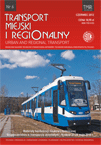 SITK RP
SITK RP 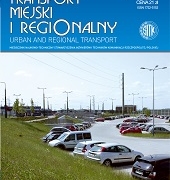 SITK RP
SITK RP 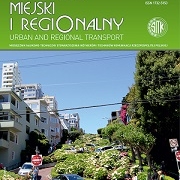
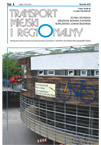 SITK RP
SITK RP 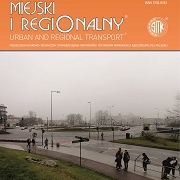 SITK
SITK 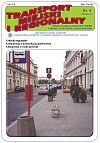 SITK RP
SITK RP 
 SITK RP
SITK RP SITK RP
SITK RP